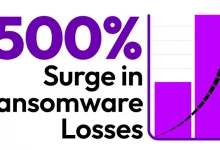The Future of Information Networks: Trends and Predictions
The Future of Information Networks: Trends and Predictions
Information networks have been the backbone of our modern society, connecting people, businesses, and governments all around the world. As technology continues to advance at an unprecedented pace, it is fascinating to delve into the future of information networks and explore the trends and predictions that await us.
1. 5G Revolution: The introduction of 5G technology is set to revolutionize information networks. With faster speed, increased capacity, low latency, and improved reliability, 5G networks will enable a host of transformative applications. From self-driving cars to smart cities, from augmented reality to remote surgery, 5G will unlock countless possibilities and shape the way we interact with information.
2. Internet of Things (IoT): The proliferation of connected devices will continue to grow in the coming years. From smartphones and wearables to smart home devices and industrial machinery, everything seems to be interconnected. This will lead to an exponential increase in the volume of data generated, which will require robust and intelligent information networks to handle and process this data effectively and securely.
3. Artificial Intelligence (AI): AI will play a crucial role in shaping the future of information networks. As more data is generated and collected, AI algorithms will become indispensable in analyzing and extracting meaningful insights from the massive amounts of information. AI will assist in automating network management and security, optimizing network performance and efficiency, and predicting network failure before it happens.
4. Edge Computing: With the rise of IoT devices, the demand for near real-time data processing has surged. Edge computing, where data is processed at the edge of the network, closer to the source, has emerged as a solution to address this demand. By reducing latency and the need for constant data transmission to centralized servers, edge computing will revolutionize information networks by enabling faster and more efficient data processing.
5. Blockchain Technology: Blockchain, the technology behind decentralized cryptocurrencies such as Bitcoin, is expected to play a significant role in securing information networks. Blockchain’s immutable and transparent nature can improve the security, privacy, and trustworthiness of data exchanges. It can also enable secure and efficient peer-to-peer transactions, reducing reliance on intermediaries and centralized authorities.
6. Cybersecurity Challenges: As information networks evolve, so do cybersecurity threats. The ever-increasing interconnectedness of devices and systems makes networks vulnerable to malicious attacks. To mitigate these risks, the future of information networks will rely heavily on innovative cybersecurity solutions, such as advanced authentication mechanisms, encrypted communication protocols, and AI-driven threat detection systems.
7. Quantum Computing: The emergence of quantum computing has the potential to revolutionize the world of information networks. Quantum computers have the ability to process massive amounts of data at unprecedented speeds, rendering current encryption techniques obsolete. This poses both challenges and opportunities for the future of information networks, as new encryption standards and protocols will need to be developed to keep networks secure.
In conclusion, the future of information networks holds vast potential for innovation and transformation. From 5G networks enabling blazing-fast connectivity to AI algorithms revolutionizing network management, the landscape of information networks is evolving rapidly. Embracing these trends and finding comprehensive solutions to the accompanying challenges is crucial to unleash the full capabilities of future information networks.





